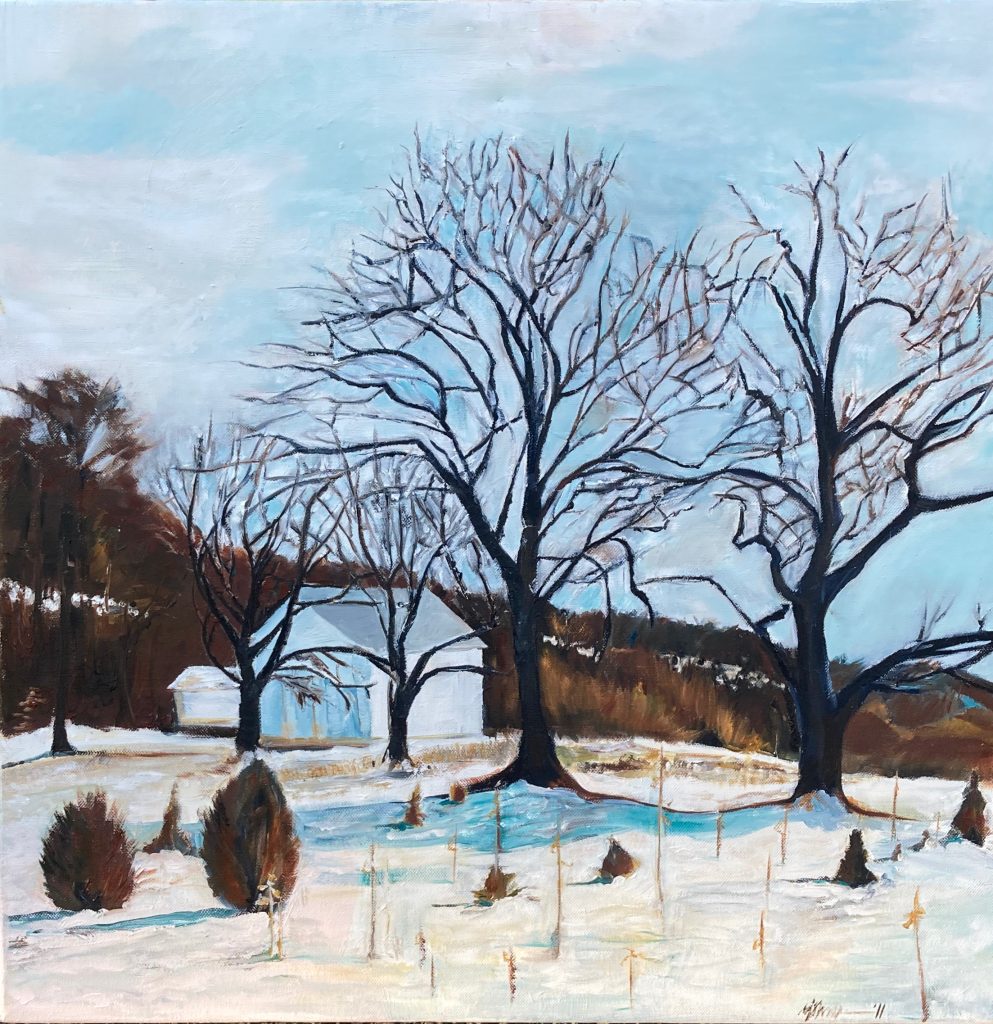Structure vs Polish
Years before I sat down in my first writing class, I took a lot of painting studios in college. At some point, I noticed a pattern to my work: I’d start with charcoal, sketching my subject on the canvas, and by the time I worked my way from the head down to the legs, there wasn’t room for the model’s foot. Or an elbow would have gone missing. I’d try to make adjustments as I applied paint, but if I did get the foot back, something else would come out crooked. Sometimes, I convinced myself that I liked these paintings. They were “odd” or “quirky” and they worked. Mostly. But once I got to a certain point in the project, with a deadline looming, I usually felt like I didn’t have the time to go back and start over, so I’d keep on going, scrunching and adjusting, hoping things would work out.
I don’t do much painting these days, and I’d forgotten about those canvases for the most part, but a conversation with my medical-illustrator kid brought the smell of oil paints and mineral spirits rushing back.
I was telling her that I was working my way through the plot for a new mystery and spending a lot of time trying to get the structure down before I could start drafting.
“Can I tell you something our studio instructors say?” she asked.
Yes, please.
“You should spend more time on your composition and proportions than you do on polishing. But lots of the time people jump into the polishing because that’s more fun.”
I felt the familiar sensation of a painting stretching beyond my control, insisting on working its way off the canvas no matter how thickly I layered the paint.
I’ve done the same thing to a manuscript, trying to force a plot-point into the story at the right moment after I’d already invested a ton of time in polishing my work. When I started writing mysteries, I realized this wasn’t going to work for me.
Structure vs. Polish
I know the myth/story of Agatha Christie’s approach–just writing all those characters until she picked the murderer out at the end–but that wasn’t going to work for me. The first mystery I tried, I had a reasonable understanding of the crime and the characters, but halfway through, my flow ground to a halt. I didn’t have a handle on the specifics. I’d been sketching and I was missing some essential parts of the story. The thing about writing mysteries is you have to figure out the whole story of what happened, and then you have to figure out the story you’re going to tell about what happened. Without both of those layers, the writing doesn’t work.
I didn’t know what to do with that first mystery, so when I started my second one, I spent over two months journaling about the characters and the story, trying on bits of dialogue, character traits, potential twists, just tapping away in a file until I had about 35,000 words that would never be part of my first draft and a rock-solid idea of how the story worked.
Once I wrote the first draft, it fit.

It wasn’t perfect, but the structure was sound and all the parts were on the page. I won’t bore you with the revision process (there was plenty of polishing) because the main lesson I took away from this experience was that proportion and structure really are essential to getting the story right.
Yes, you can wing it. You can mess around on the page and play things out and hit dead ends and throw it all away to start over, but perhaps I’m just a little too impatient to really sink into that method of writing. I have a lot of demands on my time, and I do like to feel forward momentum on my projects. I’m much more willing these days to give my projects the time they need, which sometimes means they need to be left alone for a while to simmer on a back burner. I don’t try to force them into specific word counts each week or anything like that, but once I have my structure down, I am able to use the “write something” approach to getting my first draft created.
I moved houses somewhat recently and I found one of those old college canvases in my attic. I remember painting it as an end-of-semester project and it was the one with the woman missing her foot. I still had a certain fondness for that painting, but there were reasons it had been propped in the attic and not hanging out in the house. I took a picture of her and donated the painting, hoping that someone would at least get use out of the stretcher or maybe paint over her.
I did move my file drawers of old stories, however. Some of them are equally misshapen and ill-proportioned, but they’re my proof-of-effort. There are some good ideas in there, and some might even be worthy of trying again on a fresh canvas.
Bonus content for newsletter subscribers: check your inbox for a photo of that canvas from the attic.

Loved this piece. As Pablo Picasso says, “The chief enemy of creativity is good sense.”
For example, a well-known author friend of mine tells me he just starts writing a novel and has no idea where it will take him. He only discovers what’s going to happen at the end when he gets there.
That methodology seems absolutely insane to me. If I didn’t know where I was going, why would I start the journey in the first place?